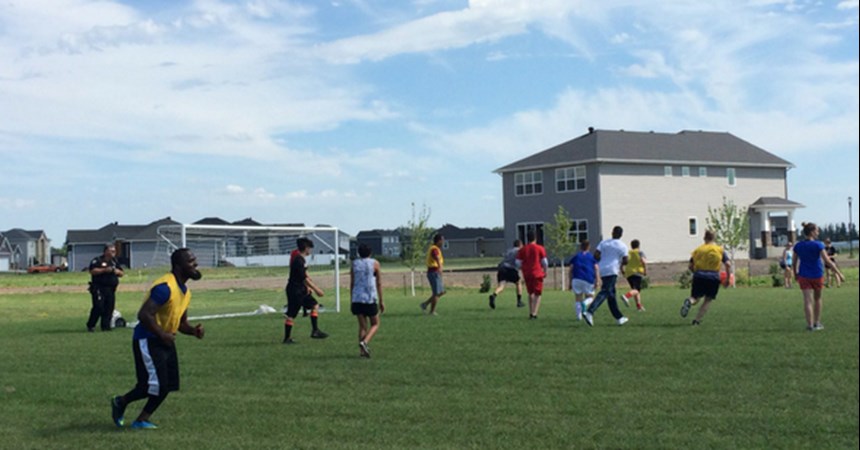“One kid may want to build muscle. Another kid, develop coordination. Some kids play high school sports and want to continue their training so they can jump back into their sport again,” said Adam Miller, Dakota Boys and Girls Ranch. “Others really fight activity which affects their confidence levels, making it hard to participate in group activities. Working with them individually gives them a chance to improve their conditioning and self-esteem.”
Ranch staff strive to address each child’s individual needs, and meet with them one-on-one to determine their wellness goals.
Stories of success
One of our young girls sat on the bench and cried during recreation time because it was too hard and she didn’t want to do it. "She was very resistant to exercise, and embarrassed to exercise in front of the other kids. Once we worked together and she saw she could reach her goals, she became very motivated,” Adam said.
Shortly before this girl completed the treatment program and left the Ranch, Adam was taking a group of kids to run a 5K. She had a home pass that weekend and wasn’t able to be there for the 5K, so Adam took her to the Y and they ran 3.1 miles—just so she could say she did it. He ran into her a few years later, and she was training for the Fargo Marathon.
The many benefits of exercise
The kids at Dakota Boys and Girls Ranch are each working to heal from a trauma or psychiatric issue. As their treatment has become more complex so has the wellness programming. Now, in addition to making sure the kids get the playtime every child needs, coordinators also focus on meeting each child’s individual physical needs.
One benefit of physical activity is to address the sensory needs of our kids. Many of our children are unable to filter out unimportant sensory information coming at them from all their senses—touch, sound, sight, movement, body awareness, taste, and smell. In-school occupational therapists work with students to assess and treat sensory processing issues. They help students find positive and appropriate ways to address their sensory needs, both in school and in the residential environment.
Exercise and physical activity are one way children can meet some of their sensory needs so the Wellness Coordinators work hand-in-hand with the occupational therapists.
Adam said, “I meet with a lot of kids during their school hours because sitting at their desks is the toughest for them. They learn that exercise relaxes them and helps them reach a calm state of mind.”
Weight gain is another issue faced by many of our children. For some it’s because they are on medications that cause weight gain, others find it difficult to motivate themselves due to depression and other psychiatric issues. Still others didn’t have positive role models who taught them healthy eating habits and the benefits of exercise.
In addition to finding ways to motivate them to move their bodies, Adam works with them on their eating and portion control.
“If they are motivated to lose weight, I work with them. Some kids follow the recommendations—they exercise and are really careful about what they eat,” Adam said. “When they see results they get really excited about it.”
Something that fits for each child
While the focus of the wellness program has changed over the years, giving kids the opportunity to participate in recreation activities still remains an important part of Ranch programming. In addition to PhyEd., which they have every day they are in school, the wellness coordinators schedule recreation activities every week. Students involved in student government are asked to make activity requests. Adam tries to balance their requests with incorporating new things. Off-campus activities include going to the YMCA and aquatic center, and to plays, community events, hockey games, and bowling. Adam has one group that does recycling and then walks to TCBY each week. Others go to Harmony Stables and ride horses.
On-campus activities planned by the wellness coordinators include movies, basketball, soccer, etc. One of Adam’s goals is to show them the world beyond sitting on the sofa and playing video games. These activities are also a great way to teach the kids social skills and appropriate ways to interact with the community.
The success kids have at the Ranch comes, in part, from the way we weave together the many aspects of treatment—spiritual life, individual therapy, group therapy, occupational therapy, and psychiatric services. Wellness plays an important role in the treatment planning, and gives kids skills and interests they can take with them as they leave the Ranch and move back into their families and communities.
This article was originally published in Ranch Voice: Summer 2018.
Read more stories like this and explore other issues of Ranch Voice.

